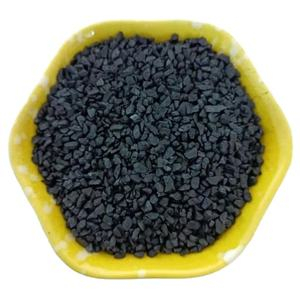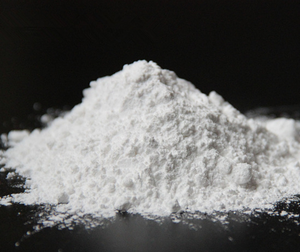Intro to 3D Printing Steel Powder
Additive production, specifically steel 3D printing, has actually transformed the landscape of modern-day commercial manufacturing. At the heart of this technological revolution exists 3D printing metal powder– a high-performance material that enables the development of complicated, high-strength elements throughout markets such as aerospace, medical care, vehicle, and power. With its ability to generate near-net-shape parts with very little waste, metal powder is not just a basic material but a vital enabler of next-generation design services. This write-up explores the residential properties, prep work techniques, current applications, and future trajectories of 3D printing steel powders.
(3d printing alloy powder)
Make-up and Residence of 3D Printing Steel Powders
Metal powders used in additive production are generally composed of alloys like titanium, stainless-steel, cobalt-chrome, aluminum, and nickel-based superalloys. These powders have to fulfill stringent needs, consisting of round morphology, narrow bit size circulation (generally in between 10– 50 µm), low oxygen material, and high flowability to guarantee regular layer deposition and optimal thaw behavior during laser or electron beam of light melting procedures.
The microstructure and purity of the powder directly influence the mechanical stability and surface coating of the final printed part. For instance, gas-atomized powders are widely favored for their clean, round particles, which improve packaging thickness and minimize porosity. As 3D printing progressively targets crucial applications such as aerospace generator blades and medical implants, the demand for ultra-pure, high-performance metal powders continues to rise.
Preparation Methods and Technical Innovations
Producing high-grade metal powders includes innovative methods such as gas atomization, plasma atomization, and electro-slag remelting. Gas atomization continues to be one of the most typical method, where molten steel is degenerated making use of high-pressure inert gas jets, developing fine, round fragments. Plasma atomization provides even finer control over bit morphology and is particularly efficient for reactive steels like titanium and tantalum.
Current advancements have actually focused on improving yield, decreasing contamination, and tailoring powder features for certain printing innovations such as Careful Laser Melting (SLM) and Electron Beam Of Light Melting (EBM). Arising methods like ultrasonic-assisted atomization and laser-induced ahead transfer are being checked out to attain higher precision and minimized production expenses. Additionally, reusing and reconditioning of utilized powders are gaining traction to sustain lasting manufacturing methods.
Applications Across Trick Industrial Sectors
The fostering of 3D printing metal powders has seen exponential development due to their special capacity to produce light-weight, lattice-structured, and topology-optimized components. In aerospace, business like GE Air travel and Airplane utilize titanium and nickel-based powders to print fuel nozzles and turbine blades with boosted thermal resistance and weight decrease. In the clinical field, tailored orthopedic implants made from titanium alloys use remarkable biocompatibility and osseointegration compared to conventional prosthetics.
The automobile sector leverages steel powders to develop intricate engine components and cooling networks unattainable with standard machining. Meanwhile, the energy sector gain from corrosion-resistant components for oil and gas expedition and nuclear reactors. Also in high-end markets like precious jewelry and watchmaking, precious metal powders make it possible for complex layouts that were when impossible to manufacture. These varied applications underline the transformative potential of 3D printing metal powders across both state-of-the-art and everyday industries.
Market Trends and Development Drivers
Worldwide demand for 3D printing metal powders is growing rapidly, driven by improvements in additive production technologies and raising approval throughout end-user industries. According to market analysis records, the worldwide metal powder market for additive manufacturing is predicted to go beyond USD 4 billion by 2030. This development is fueled by variables such as climbing investment in R&D, growth of industrial 3D printing abilities, and the need for localized, on-demand production services.
Federal government initiatives promoting digital manufacturing and Industry 4.0 are likewise adding to market momentum. Companies are spending greatly in automation, AI-integrated quality control systems, and real-time monitoring of powder performance. Joint endeavors between material suppliers, OEMs, and academic organizations are accelerating development cycles, bringing brand-new materials and applications to market much faster than ever before.
Difficulties and Ecological Factors To Consider
In spite of its promising trajectory, the widespread use of 3D printing steel powder is not without difficulties. High product and equipment prices remain a barrier to access for little and average ventures. Powder handling, storage, and security protocols need stringent adherence because of dangers related to surge and breathing risks. Moreover, problems like batch-to-batch consistency, oxidation level of sensitivity, and restricted standardization pose technical hurdles.
Environmental concerns likewise impend huge. The manufacturing of steel powders is energy-intensive, commonly involving high-temperature handling and rare earth components. There is an immediate requirement to create greener alternatives, improve powder recyclability, and carry out closed-loop systems that lessen waste and emissions. Some business are checking out hydrogen-based sintering and eco-friendly energy-powered manufacturing units to align with round economic situation concepts and global sustainability goals.
Future Leads: Technology and Strategic Growth
(3d printing alloy powder)
Looking ahead, the future of 3D printing steel powders is poised for groundbreaking growths. Breakthroughs in nanotechnology could bring about the production of nanostructured powders with extraordinary stamina and thermal resistance. Hybrid production comes close to combining 3D printing with CNC machining and chilly spray are opening up doors to a lot more flexible, economical manufacturing workflows.
Additionally, the combination of artificial intelligence and artificial intelligence in powder selection and process optimization is expected to enhance integrity and reduce experimental experimentation. New alloy growth tailored particularly for additive production will certainly further broaden the variety of printable materials, allowing buildings such as shape memory, self-healing, and bio-functionality.
Joint ecological communities among worldly researchers, suppliers, and policymakers will certainly be vital in shaping regulatory criteria, education and learning programs, and global supply chains. As 3D printing remains to progress from prototyping to full-blown production, steel powders will stay at the leading edge of this commercial transformation– driving advancement, efficiency, and sustainability across the globe.
Provider
TRUNNANO is a supplier of boron nitride with over 12 years of experience in nano-building energy conservation and nanotechnology development. It accepts payment via Credit Card, T/T, West Union and Paypal. Trunnano will ship the goods to customers overseas through FedEx, DHL, by air, or by sea. If you want to know more about potassium silicate, please feel free to contact us and send an inquiry(sales5@nanotrun.com).
Tags: 3d printing, 3d printing metal powder, powder metallurgy 3d printing
All articles and pictures are from the Internet. If there are any copyright issues, please contact us in time to delete.
Inquiry us


